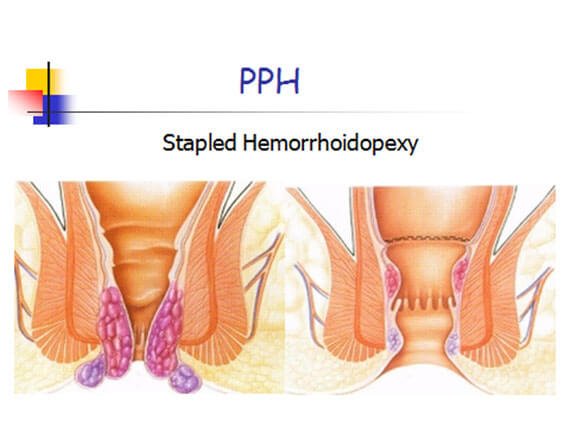HEMORRHOIDS:
DIAGNOSIS AND TREATMENT
Patients often contact our office seeking care for "hemorrhoids"; you may be surprised to learn, however, that only a small percentage of these complaints are actually due to hemorrhoids. A wide range of conditions, including fissures, fistula abscesses, infections, and even cancer can produce similar symptoms. The most frequent of these symptoms are bleeding and rectal pain; mucus leakage, difficulty cleaning after a bowel movement, and anal itching or irritation may also occur. The cause of hemorrhoids has been attributed to prolonged periods of driving, sitting on cold seats or benches, eating spicy foods, and doing manual labor, though these activities are rarely the cause of anal problems.
There are two types of hemorrhoids:
External hemorrhoids. Located just outside the anal canal, these can become swollen and painful (thrombosed).
Internal hemorrhoids. Located inside the anal canal, these are relatively specific, and manifest in bright red bleeding or prolapsing anal tissue.
The standard classification of hemorrhoids consists of four grades, which describe what is happening to the internal hemorrhoids.
- Grade 1 hemorrhoids: these cause bleeding, but do not prolapse.
- Grade 2 hemorrhoids: these cause bleeding and also prolapse outside of the anus at the time of bowel movement. The hemorrhoidal tissue, however, spontaneously returns back into the anal canal after a bowel movement.
- Grade 3 hemorrhoids: these cause bleeding and prolapse, but remain outside the anal canal until they are manually pushed back inside.
- Grade 4 hemorrhoids: in this case, internal hemorrhoids sit outside the anus; they re-prolapse even after being pushed back inside.
All Grades may be associated with external skin tags; in most cases, the higher the grade, the more associated tagging.

